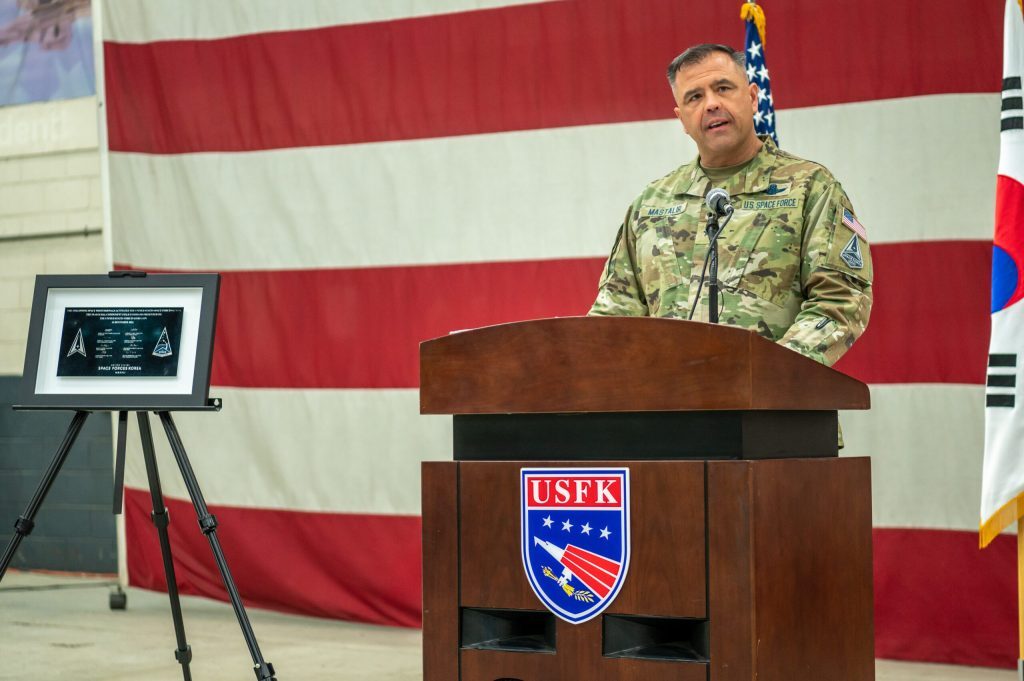
In the space domain, the plan is to be in a state of "perpetual competition," said Gen. B. Chance Saltzman, chief of space operations of the U.S. Space Force.
Saltzman, who assumed command of the Space Force in November, spoke about the security challenges in the space domain March 7 at the Air & Space Forces Association's Air Warfare Symposium in Aurora, Colorado.
Saltzman said China is developing "remarkable capabilities on orbit," and in response, the U.S. has to figure out how to protect its space assets while also deterring rivals from launching attacks that could make outer space unusable for human activities.
"Unlike in other domains, our concept for domain control in space cannot rely on overwhelming destructive force," said Saltzman.
Comment: A bit of honesty never went amiss.
The likely scenario will be "perpetual competition" in order to maintain stability, he said, "neither driving our adversaries towards disrupting the space domain nor towards desperation."
Comment: Note that this article was posted back in March, just prior to the US SF's $3.7 billion budget increase. And 'perpetual competition', for the US at least, means perpetual budget increases.
Because space is a global domain, victory is not defined in traditional terms. "If you do this right, you never fight," he said.
Comment: And so one can't define who's winning, nor when the competition is over?
It's a balancing act, Saltzman said, as the U.S. wants "space superiority when necessary while also maintaining the safety, stability and long-term sustainability of the space domain."
Resilience needed
A centerpiece of the U.S. strategy is to deter China from taking aim at the Pentagon's most valuable geostationary satellites located in fixed positions 22,000 miles above the Earth's equator. DoD relies on these satellites for critical communications and early warning of missile launches.
Comment: Whilst China probably is implementing such a plan, its track record demonstates that any action it would be taking would be in response to US belligerence; and so if the US were instead to focus on cooperation with China, there'd be no reason for concern.
Due to their fixed location, "that predictability and lack of relative motion to the ground makes them particularly vulnerable to direct attack," Saltzman said.
To offset that weakness, the Space Force plans to augment geostationary systems with distributed networks of satellites in different orbits. What that says to adversaries is "listen, even if you could attack that one, why would you want to escalate that way when there's so many other capabilities?"
That is what resilience in space means, he added. "If you complicate targeting, you get resiliency, you raise the threshold for attack, which equates to deterrence."
Over the next several years, the Space Force will diversify and add networks of satellites in low and medium orbits. "So it's the idea of going to smaller satellites and proliferating our missions across multiple larger constellations that really gives us a more resilient architecture," said Saltzman.
Space Command: 'We're under threat'
China's and Russia's advances in space lasers, on-orbit proximity sensors and other technologies are worrisome for the United States, Lt. Gen. John Shaw, deputy commander of U.S. Space Command, said March 6 at the Air Warfare Symposium.
"We're under threat in the space domain," said Shaw. "If I were on the General Staff of Russia, or if I was serving in the PLA [China's People's Liberation Army] I would be advising the leadership to go after the space capabilities of the United States."
Comment: Pathological projection.
The U.S. relies on satellites "to project power across the planet and they're not all that well defended. So we should not be surprised that we're under threat," Shaw said.
"We have to completely rethink how we do our space architectures," he said. "We're probably gonna have to be more nimble."
A shift to smaller and cheaper "commoditized" satellites is one way to do that "so we're always replenishing those platforms on a regular basis," said Shaw. Another option is to make geostationary satellites refuelable so the military can move them if necessary and not have to worry about depleting their limited fuel supply.
China is watching
The U.S. military is likely to be more successful at deterring China by integrating its air, ground, sea and space systems, said Brig. Gen. Anthony Mastalir, commander of U.S. Space Forces Indo-Pacific.
The unit was established in November under U.S. Indo-Pacific Command, a large combatant command based in Hawaii and responsible for operations in the Asia-Pacific region.
"No one synchronizes across all domains better than the United States," Mastalir said March 8 at the Air Warfare Symposium. "We continue to demonstrate that every day in the Indo Pacific and the PRC sees this on a daily basis," he said. "That is an incredible deterrent."
Comment: What exactly has this recently established unit deterred? Its belligerence is actually forcing China to respond with countermeasures.
China has put up a lot of satellites just within the last five to six years, he said. "There's a lot of capability on orbit." Most of China's newer constellations are surveillance systems "designed to find, track and target U.S. forces and allied forces," he said.
Comment: Again, whilst China is indeed preparing to counter the US, it's doing a lot more than just that with those satellites: China-Russia Consortium space weather center established in Beijing
For the United States, "just having the assets isn't enough," Mastalir said. "You really have to string that all together in order to present a credible combat capability."




China has a decade lead in space, and the U.S. can't afford a border fence, so I'm sure the U.S. will continue to want .